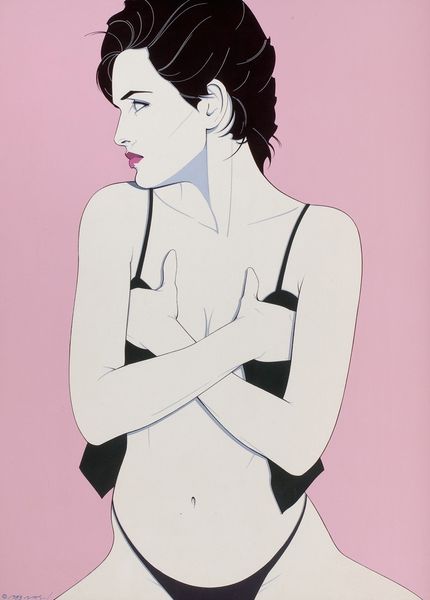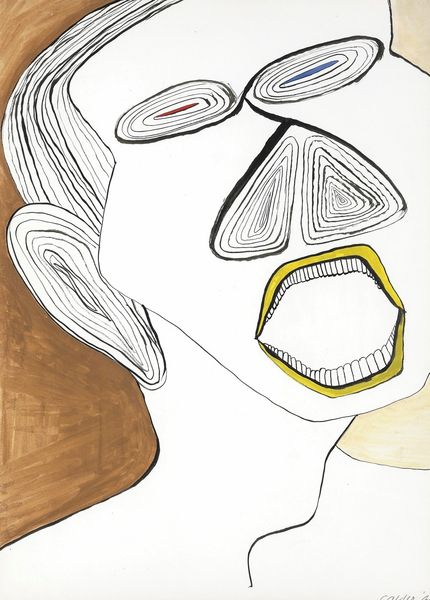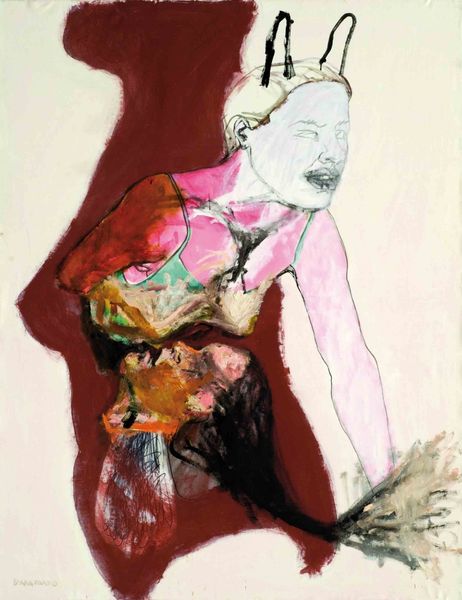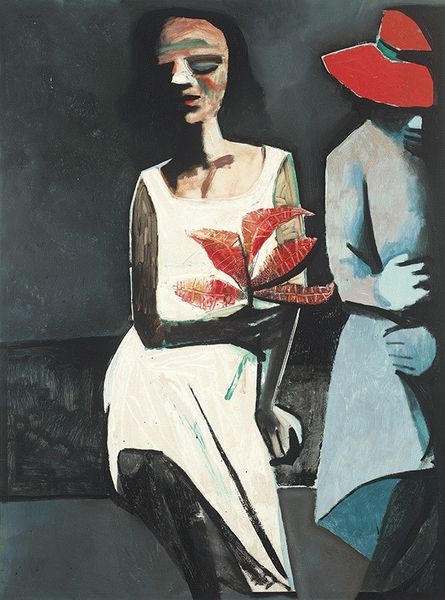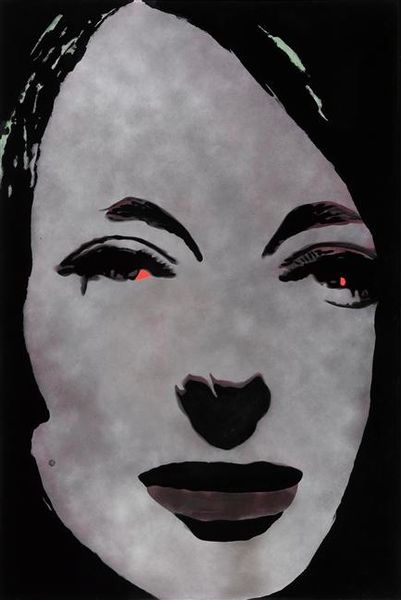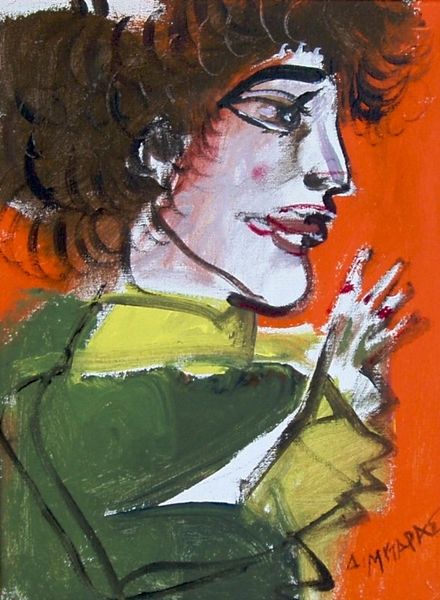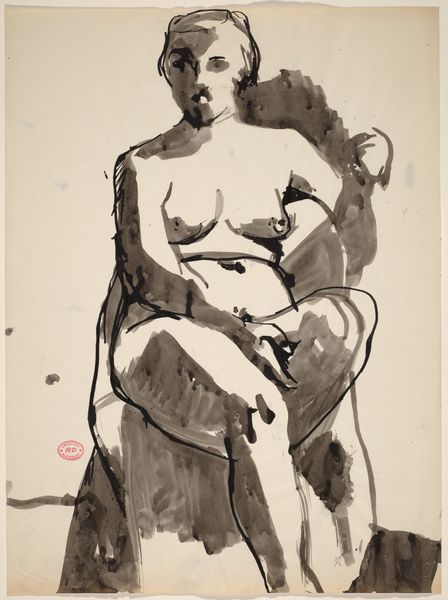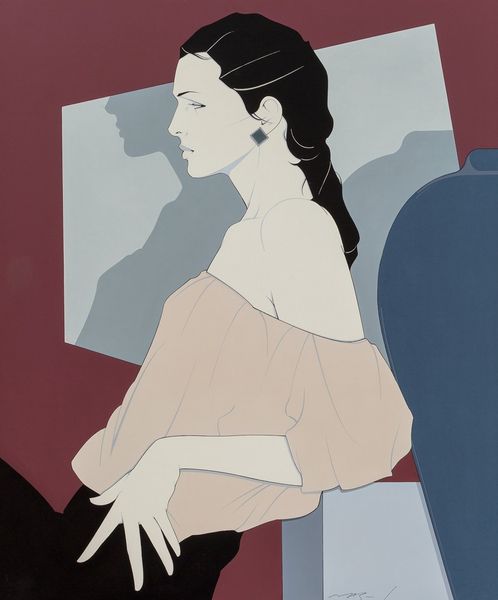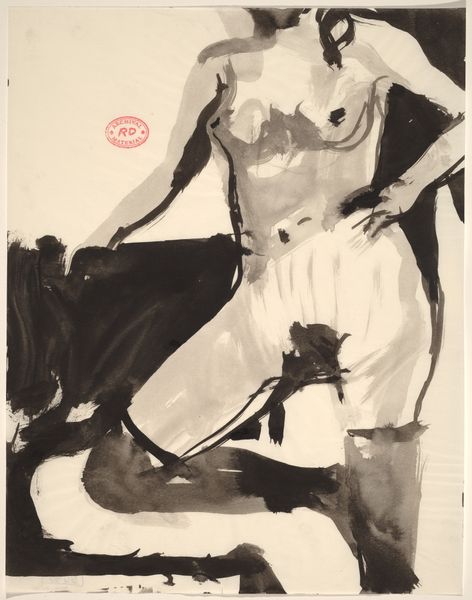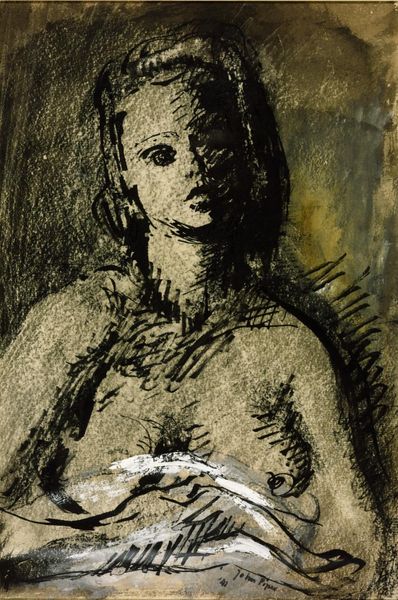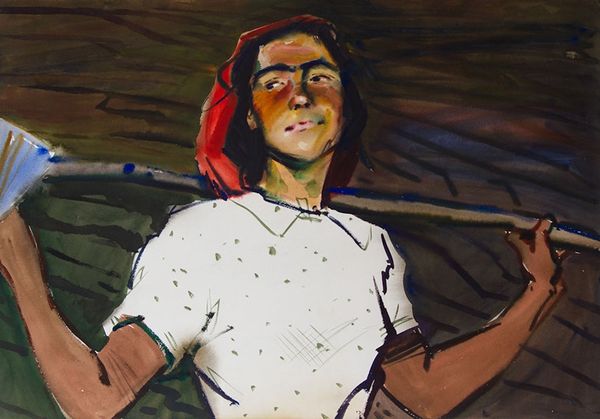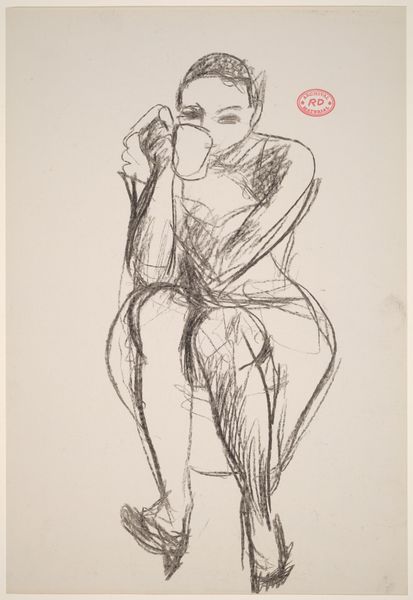
painting, acrylic-paint
#
portrait
#
contemporary
#
facial expression drawing
#
narrative-art
#
painting
#
caricature
#
acrylic-paint
#
figuration
#
form
#
line
#
portrait drawing
#
portrait art
Copyright: Vlada Ralko,Fair Use
Curator: The artwork before us is titled "Little Black Dress," a painting realized with acrylic paint in 2013 by Vlada Ralko. Editor: My first impression? The almost grotesque vulnerability, and how that tension works with the casual title. Is it me, or does it seem almost unfinished? The thin paint application in some areas makes me focus on its process. Curator: Interesting point. Let's consider the historical context of portraiture, especially female portraiture. How often do we see this level of unvarnished emotion presented to a public audience? It seems like a challenge to established norms within institutions, doesn’t it? Editor: It certainly resists glamorization! And look closely—the stark lines, the almost sketch-like quality; it calls attention to the act of creation itself, almost a type of performance by the artist as well as subject, if they’re two different individuals here. The economy of materials—thin washes of paint and visible linework—forces us to consider the production of art, the conscious decisions of what to include or leave out. Curator: Agreed, and let's think about what she includes. Note the vivid red accent—the lipstick, the nails, the frame of what looks like a digital device or mirror. It points towards contemporary beauty ideals and self-representation, and even how social pressures exert influence on presentation in our modern, digitally-mediated era. Editor: The reflection within that dark rectangle takes center stage here, I think, but, crucially, we don't get to see what's reflected. She seems almost trapped by its glow, weighed down. Curator: Precisely! The narrative then is about the very making and consuming of images. It encourages scrutiny. It raises an important social conversation on how we interpret and internalize imagery and media consumption. Editor: Exactly. Ralko’s deliberate handling of these raw materials pushes back on traditional notions around value—what constitutes “finished,” what signifies “beauty”—within the broader system of art production. Curator: This piece definitely makes us think about the societal structures in how women portray themselves. The rawness is a compelling critique in our current age. Editor: It does feel urgent and uncomfortable. Curator: Absolutely, an insightful painting about where we’re at in how women negotiate media representations, past and present.
Comments
No comments
Be the first to comment and join the conversation on the ultimate creative platform.

